Resources
Workshops & Colloquies The Wabash Center hosts workshops for teachers of theological and religious studies in higher education in an accredited seminary or theological school in the United States, Puerto Rico, or Canada. Important Links Payment of Participants Policy on Full Participation Travel and Reimbursement Guidelines Reimbursement Form Things To Do In Crawfordsville Honorarium Participants in Wabash Center workshops receive an honorarium based on the number of days and amount of advance preparation and responsibility. Processes and Procedures for the Payment of Honorarium Policy on Deadlines for Program Deadlines The program deadlines are meant to facilitate application by a wide array of participants, as well as create fairness in the selection process. Program deadlines also assist administrative staff who work to support each group and all programs. The Wabash Center will, when we see the necessity, extend the deadline of an application process. We will rarely, if ever, extend the deadline for individual requests. We ask participants, as well as recommenders, to respect these important deadline boundaries. Adherence to deadlines foster fair-mindedness and a spirit of collegiality. Should an issue need to be arbitrated, please be in touch with the Director of the Wabash Center. 2026 Teaching and Learning Workshops Early Career Hybrid Workshop: Reclaiming Joy and Authenticity in Teaching Early Career Hybrid Workshop: From "The Grind" to "The Work Your Soul Must Have" Hybrid Workshop: Faculty of Asian Descent 2025 Colloquies JoT Colloquy 2025 Teaching and Learning Workshops Early Career Religion Faculty Teaching Undergraduates (Hybrid) Early Career Theological School Faculty (Hybrid) African Diaspora Community as Classroom Sacred Self-Care Benediction Past Gatherings See a complete list of Wabash workshops, colloquies, and conferences with a group photo and list of participants.

Cláudio Carvalhaes Associate Professor McCormick Theological Seminar I am delighted to be writing this blog with two other fantastic teachers I admire greatly: Lynne Westfield and Tat-siong Benny Liew. The Wabash Center has been a fantastic place that has empowered so many teachers, and has expanded resources and possibilities for
Submitting an Application for a Wabash Consultant Please submit the following materials through our online application process: Contact Information Preliminary Project Description Statement Letter of Support from your Department Chair, Dean, Provost, or President Assignment Process for a Consultant After receiving a school’s application, a consultant will assist the contact person to refine and clarify the nature, scope, focus and duration of the consultation. This may take two or three conversations. Once refined, the consultant will work with the Wabash Center staff person to draft a letter of agreement detailing the consultation. The letter of agreement will be sent to the school’s contact person for signature. The work of the consultation will then proceed and must remain within the boundaries of the letter of agreement. Should changes in the agreement be necessary, the letter of agreement will need to be amended. Note: The Wabash Center provides the stipend for the consultant’s work. In the rare instance that a consultant travels to a campus, the Wabash Center will also provide travel for the consultant. All other costs (e.g., resources, hotel lodging, food) associated with the consultation are the responsibility of the school. Contact Information We need information about the school, the primary contact person for the consultation, your Dean, Provost, Principal, or Department Chair (whoever coordinates the faculty members you wish to invite to the consultation), and an additional committee member who will be helping to plan the consultation. Given the three areas of focus (Consultant Program foci), from which area are you seeking support? Please be specific. The Project Description Statement - no more than 3 pages, single-spaced Your Statement Should Address the Following: Describe the presenting problem, concern, or issue that has been identified for a consultation. How does it align with one of our three stated foci above? What is the importance of this topic or issue in your context? What outcomes are desired from the consultation? Be specific. Note any other institutional initiatives in which you are participating and their relationship to this request (such as other grant projects, an impending accreditation visit, or a past workshop or consultation). Describe your institutional context by providing a succinct profile of your school or department (such as the type of students, number of faculty, typical teaching load). Provide the current priorities of the school and any other factors that may influence the design or goals of the consultation. Charting or graphing these materials is encouraged. Identify the people who have committed to work on the issue or concern and who will be directly involved with the consultation and who will help you develop the follow-up steps. Let us know how much support you have for addressing this problem, both from the institutional side (e.g., staff and administrators, trustees, other stakeholders) and by other faculty members. Projected Possible Dates: Please indicate any flexibility you have on the range of dates that you supplied in the application. Each context is unique. Provide us with any additional information we might need to know to better support your consultation. Letter of Support Please attach a letter of support from the Dean, Provost, Principal, or Department Chair that you have consulted about this application. Ask them to address the question of institutional support for addressing the problem that you have named and how it relates to other institutional initiatives. Login to Application Form The Online Application Process 1. The first step in the online application process is to establish an online account. You will be prompted to type in your email address and provide your own password. 2. You may “Hold” your application at any time if you need to gather additional information and complete the application later. 3. Your application will not be submitted to the Wabash Center until you click on the “Submit” button at the end of the process. 4. Once you have logged in, you will be prompted to select the type of application you wish to use. For the Consultant program, click on the “Consultation” button. 5. You will be prompted to enter the required contact information and to attach the Project Description Statement and Letter of Support. 6. We recommend you print the application for your own records by selecting “Print” from your browser’s File menu (if you have Firefox, use the pdf button). Questions and More Information: Nancy Lynne Westfield Director westfiel@wabash.edu 800-655-7117
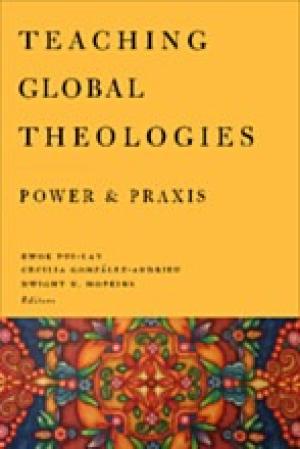
This collection of ten essays examines globalization (the radical diversity and complex interconnections that characterize the present state of human existence in the world) and offers various methods for teaching and doing Christian theology in this context. Globalization has arisen, in large part, from the colonial expansion of western European nations, through trade and commerce, migration, travel, and mass communication, and has resulted in a crisscrossing and blurring of national and cultural boundaries (12, 40, 145). The first century Marcan imperative for Christians to “go into all the world” that was at first aspirational is now the reality of Christianity in the twenty-first century. The collection is divided into three sections. Part I defines globalization and encourages theological educators to take seriously not only the current pluralism in the world but also the diversity within Christianity both presently and historically (14, 29, 46). Part II examines the concept and practice of theological education, inclusive of methods for encouraging seminary students’ positive engagement with persons of other faith traditions (104). Part III goes further to suggest how theological educators can enable their students to achieve a deeper understanding of being and acting as persons of faith in global community. Just as important as the divisions of the collection are the prominent themes in this volume of essays. Some of these themes are: intentionality in seeking, welcoming, and appreciating encounters with other religions (51, 92); the role of theology in public life in addition to its functions in Christian churches and communities (12); the importance and desirability of dialogue in teaching theology as well as in the encounters between different religions and cultures (42, 54, 83, 109, 150); the enhancement of systematic theology and theological education through comparative studies and comparative theology (47, 100, 104, 109); the interrelatedness and mutual influences between local settings and global networks (79, 146, 165-166, 173); social justice as the common good and essential feature of global community (58-59); and global citizenship as participation in global networks and responsibility for improvement of the same by exposing and challenging systems of oppression and by working for social justice (59, 67, 88, 126). The collection represents a noteworthy start to critical reflection and modifications in teaching Christian theology in light of the diversity and pluralism resulting from globalization. The essayists describe their use of pedagogical tools such as field trips (51), sacred texts from various religions (52), roundtable discussion (152-160), service and study abroad (81-84, 169), non-western cultural sources (92-99), comparative studies in religion (52, 100), music and language arts (117-120), and autobiography for reconstructions of identity (78, 168-171). Further work is needed in analysis of the shifts within Christianity itself. Several of the essayists acknowledge that demographic shifts are tilting the population growth of Christianity towards the Global South – Africa, Asia, and Latin America. One essayist asks the question: What new or alternative interpretations of Christian doctrines will emerge in these areas? (38). Postcolonial theologies are already taking shape. Christian theology in the future will likely be the product of mutual learning between the Global South and the Eurocentric Global North.
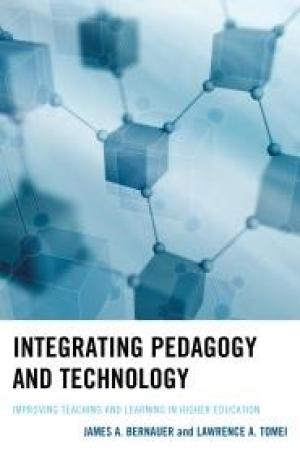
If your school is in the process of transitioning to online learning, Integrating Pedagogy and Technology may be the only book you need – it certainly should be one of the first you read. Bernauer and Tomei’s work is brimming with very useful information for schools in transition. The authors have devised what they call an “Integrated Readiness Matrix” (IRM) to assist institutions both in discerning how ready their faculty may be for this change and in moving them toward greater technological and pedagogical proficiency. “The goal of the IRM and this textbook is simple: move higher education faculty incrementally from lower left quadrants to more advanced upper right quadrants” (80). Considering how best to integrate technology into instruction “requires all faculty to be conversant with the theories of learning, the taxonomies and domains of learning, a new methodology for preparing and developing college faculty for a career of classroom teaching” (vii). The book includes a chapter on educational psychology, exploring the unique features of five pedagogies: behaviorism, cognitivism, humanism, constructivism, and connectivism. It builds to address taxonomies of learning, pedagogical skills and competencies, and technological skills and competencies. The lists of competencies and learning objectives for faculty development in chapters eight and nine are worth going over with faculty even by themselves. The authors, from Robert Morris University in Pittsburgh, model educational theory, using advance organizers at the beginning of each chapter, for example. Chapters may end with review sections, indices of concepts addressed in particularly complex chapters, suggested readings, and so forth. The preface introduces preconditions for using the Integrated Readiness Matrix, which is considered “sufficiently valid and reliable to serve as a basis for faculty self-assessment and professional faculty development,” to determine where each faculty member’s pedagogical and technological skills need bolstering (vii). Another strength of this book is its applicability to various kinds of learners and institutional contexts. This material is valuable whether you are teaching undergraduates, graduate students, or other adult learners. Your field does not matter; this is not one of those texts where everything must be translated in order to be useful to theological or religious-studies faculty. Reflective teachers and institutional administrators concerned about how to develop faculty competencies will both find appropriate and important resources here. Many institutions of higher learning are already in the process of transitioning to more online offerings. But this often happens in a haphazard, unorganized way, leaving certain faculty to carry the technological burden for the entire institution. Alternately, online expectations are introduced or imposed, but faculty are not empowered and trained to make the best use of technological tools, or pedagogical considerations do not enter the discussion. This book can be used to assist entire departments in training faculty, generating conversation about the pedagogical sophistication necessary to use technology well, and balancing technological and pedagogical considerations while transitioning to online learning.

Invoking the name of the “Common Core” effort to establish national K-12 educational standards in its title, this is not a text directed primarily at college educators. It is important to ask, therefore, whether the authors’ approach is broad enough to answer the needs of the college classroom and whether their approach to teaching writing is of any use to the professor of theology or religious studies. The answer is “yes” to both. In an effort to “mine the gold” in the Common Core writing standards, Murphy and Smith identify six big ideas: teaching writing as a process, integrating the language arts, extending the range of student writing, spiraling and scaffolding, and collaborating. The emphasis on writing as process informs their entire project and the other themes are treated in individual chapters. Preparation for the book included conversations with “dozens of teachers,” with some “college teachers in the mix” (7). The second chapter provides a sample lesson plan and commentary designed to integrate the language arts; that is, reading, writing, speaking, and listening. Among the chapter’s helpful charts is a list of “strategies for writing with specifics” including “details,” “examples,” and “active verbs” (23). One can imagine a professor drawing from this list when helping a student enhance vague writing. Ideas for building student vocabularies and building community are equally transferable to the college environment. The third chapter takes on the challenge of extending the range of writing and acknowledges the difficulty students have when transitioning from descriptive to argumentative essays. With vignettes, ideas for writing exercises, and samples of student writing, the authors are able to provide some insight into the ways students struggle and how one might build bridges to help. In a particularly thoughtful college-level example, the professor has her students read exemplar restaurant reviews and collaboratively design a grading rubric based on the effective strategies observed in these reviews before writing their own. The fourth chapter examines how the pedagogical practices of spiraling and scaffolding produce better writers. By spiraling, the authors mean revisiting key concepts repeatedly at different layers of complexity. By scaffolding, they mean any temporary practice exercises or assistance intended to sharpen students’ skills. Within a list of examples is the suggestion that students spend some class time focusing on a single quote that supports their argument and assessing how to connect it to their own ideas. Reflecting on collaboration, the fifth chapter describes student-to-student, teacher-to-student, and teacher-to-teacher collaborative strategies. Drawing on the theme of collegiality, the authors use their final chapter to consider how teachers can best produce positive institutional change. This is the principle of the book as a whole: effective teaching practices should be sought among effective teachers. This slim volume will be of great interest to college educators. It provides meaningful insight into the struggles students experience when transitioning from high school to college writing and practical advice on how to help.
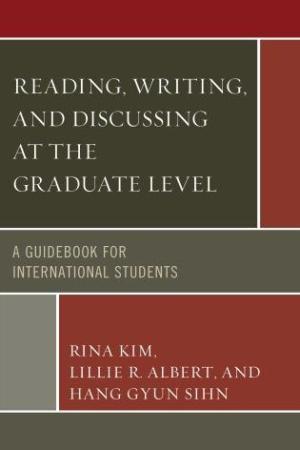
Reading, Writing, and Discussing at the Graduate Level A Guidebook for International Students by Rina Kim, Lillie R. Ablert, and Hang Gyun Sihn is a new resource for graduate international students and those who work with them in the academic setting. The three authors come from diverse personal and academic backgrounds and draw from their experiences as international students themselves and from working with international students in developing this text. They provide a guidebook for students who are proficient in English but struggle to understand the “academic culture and norms in the United States” (ix). Each chapter focuses on a different aspect of graduate level work; academic reading, in-class discussions, writing assignments, preparing oral presentations, and developing relationships with classmates and professors. The authors do a good job of stating the limited scope of their effort. They recognize that the text is not going to provide a comprehensive primer on academic writing or research, but they point out common ways in which international students are derailed in their efforts because they misunderstand expectations. Throughout the text, the authors draw on informal conversations they have had with students to illustrate common perspectives or misunderstandings. The scenarios they highlight help to clarify issues and suggest ways of moving forward. These scenarios provide some of the most helpful insights in the book. International students may find chapter two on “Engaging in Academic Discussions” and chapter five on “Developing Social and Academic Relationships” to be the most helpful because they discuss at length ways to build confidence and helpful hints for anticipating the atmosphere of classroom interactions in the United States. The most effective aspects of each chapter are the ways in which the authors show how perspectives and expectations differ even in basic items such as how reading lists are arranged in a syllabus or clarifying the expectation to write in your own words. The subtle nuances of the academic culture of the United States are dealt with in a relaxed manner, encouraging students to ask questions or seek help when necessary. The text does assume a high level of reading proficiency. This is stated clearly by the authors, but the writing might be too complex for the students who are seeking the type of assistance the book covers. Although the main audience is the international student, this book is probably more helpful for faculty members who are beginning to teach international students. The informal scenarios that are scattered throughout the book provide a helpful window into the mind of the international student. Faculty members or other mentors will find this text helpful as they shape assignments, engage international students in classroom discussions, and articulate expectations.
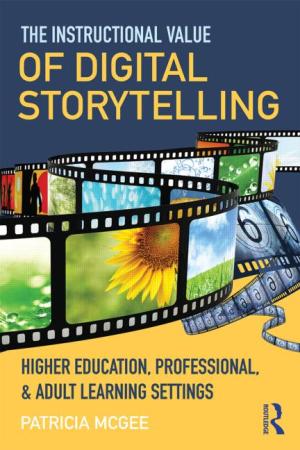
Digital Storytelling originated in the early 1990s in the matrix of what was then called “new media”: a mix of graphics, photography, videography, audio recording, and video and audio editing. As first developed at the Center for Digital Storytelling in California, workshop participants learned to create a two- to three-minute first-person story in a digital format that could be shared via the Internet. By 2000 when media production software became commonly available on personal computers, what had been the realm of professional artists and media producers became a potential playground where ordinary people of all ages could be empowered to craft and to share digitally a succinct, poignant, brief first-person video story. Since then, this form of storytelling has found advocates around the world: in small villages in Wales; in schools from elementary to college-level in the U.S.; in museum art programs in Australia; and in social service and social justice organizations in the U.S., Africa, and elsewhere; and in youth faith formation in Norway and Denmark. Major universities now offer education courses in this method, from the University of Cardiff in Wales to the University of Hawaii. ESL teachers have successfully employed this technique to help immigrants tell their stories. PhD students have written dissertations that explore the evolution and application of Digital Storytelling in a variety of settings, and media and cultural studies scholars have analyzed this phenomenon as it has been introduced in multiple cultures. While the original short format is referred to with initial capital letters, the wider field of digital media storytelling has evolved and now takes many forms. Patricia McGee has carved out a portion of this diverse world of digital storytelling and limited her comments to “Higher Education, Professional, and Adult Learning Settings,” which is still a very wide scope. She divides this well-researched work into three sections that provide excellent overviews of past storytelling traditions and new twenty-first century approaches; current institutional uses and emerging models for digital storytelling; and applications in diverse cultural and institutional contexts. She advises readers to turn to whichever section they find of most interest. Theological educators and religious studies professors will most benefit from exploring the third section on applications. With a little imagination, they can envision how the digital storytelling examples McGee cites can be translated for application in their classrooms and how their ministry students and graduates can use digital storytelling in youth ministry, faith formation, catechumenal processes, new members gatherings, church building transitions and anniversaries, and church websites. McGee, Associate Professor of Digital Learning Design at the University of Texas at San Antonio, is evidently a master of her wide-ranging, fast-evolving field. She is a good guide, one who will stretch the vision of theological and religious studies educators. By introducing this creative, communal digital storytelling process in their classrooms, their students can learn to empower themselves and others to claim their voice.
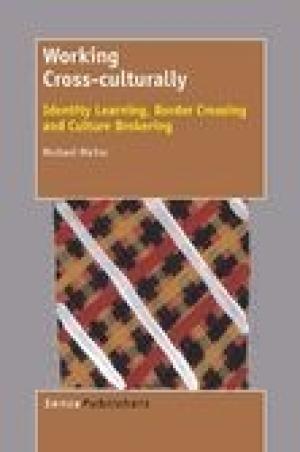
Michael Michie’s 2014 publication of his dissertation argues that previous research into cross-cultural teaching has focused on skills, methods, and curriculum, but ignores teachers. To address this lacuna, Michie interviews six professional, western, K-12 science teachers of indigenous students and investigates what qualities characterize successful cross-cultural teachers and how teacher training can prepare instructors for cross-cultural contexts. Michie’s work makes three contributions to pedagogical discussions of cross-cultural teaching. First, Michie provides a sustained examination of the ways cross-cultural experiences shape teachers into “culture brokers” or “border crossers.” Michie claims the most successful teacher of indigenous students learns to be a border crosser in his or her identity formation even before entering the classroom. Second, Michie analyzes successful border crossers and constructs a profile of a border-crossing teacher. Finally, Michie suggests what kind of training shapes teachers to be successful culture-brokers. Michie claims an “international” framework for his study (1), but limits his subjects to those teaching in western, English-speaking sites (Australia, New Zealand, and Canada, 141). Michie argues that his focused data allows him to speak more precisely, and leaves expansion of this deep, thorough analysis to successive studies. Michie’s project unfolds in six chapters. In chapter one he defines the project and identifies himself as a “participant-researcher” with his subjects (2). In chapter two, Michie reviews the literature on western teaching of indigenous children. He sifts the anthropological, biological, and ethno-historical studies on “border crossing” and “cultural brokerage” (5) to refine the terms. He defines culture “as the social environment in which an individual is raised and lives and includes a range of concepts and beliefs that is accepted by individuals as defining their group identity” (14). The role of education is to “help those growing up in a culture find an identity within that culture” (Michie cites Bruner 1996, 15). This move brings identity studies and questions of power into the forefront of pedagogy – the (western, powerful) identity of the teacher and the (indigenous, marginalized) identity of the students. Thus teaching requires dexterity and self-awareness in crossing cultural borders. Michie’s first contribution is to distinguish between terms in the literature. In his subjects, Michie finds that “border crossing” (“the ability of people to move metaphorically between cultures,” [50]) is a specific identity formed in “marginal people” (51). In contrast, “culture broker” (“a strategy which an individual can be used to promote cross-cultural understanding,” [51]) is the “role” that an “intermediary” chooses when mediating between cultures (52). Next, Michie proposes that teachers in cross-cultural situations can choose a mediating role while actively cultivating respect and appreciation for the cultures they move between (as border crossers do; 52, 79). In chapter three, Michie analyzes the participant interviews looking for evidence of border-crossing experiences and cross-cultural encounters earlier in life. Teachers of indigenous students report positive affective and cognitive experiences when they engaged (pre-professionally) indigenous and first nation people (73). Michie identifies three successive degrees of engagement in the teachers. “Border crossers” choose a transitory role and show “interest in the culture and aspirations of indigenous people”; “border workers” “continue to work at the border as allies of the indigenous people”; “border mergers” exhibit a fully bi-cultural identity and do not distinguish between the cultures they navigate (80-81). Chapter four examines how participants understand the role of culture broker or border-crosser and for what purpose they use that role. Chapter five evaluates participant ideas of how to enable teachers to cross cultural borders in their classrooms. Michie then defines what kind of training can best shape K-12 instructors to teach from a culture broker role. Finally, chapter six summarizes Michie’s conclusions and applies the best teacher training practice to specifically preparing western instructors to teach science as foreign cultural knowledge to indigenous students. This study can be applied to the pedagogy of religion in at least two situations. First is for college or seminary instructors to consider teaching the academic study of religion as a “foreign” way of knowing. How might students of deep religious conviction respond differently to a perceived exercise of dissecting their sacred text if instructors cross that cultural divide between confessional faith and academic study first? The same cultural crossing might bring “nones” into a new world of thinking about and reflecting analytically on religion. Second, Michie shows that, as professional teachers, our cultural identities and our ability to meet students have already been shaped – positively or negatively. Reflecting on the degree(s) to which we are able to meet our students, cross metaphorical and cultural borders, and broker academic culture with newcomers is critical to our growth as teachers.
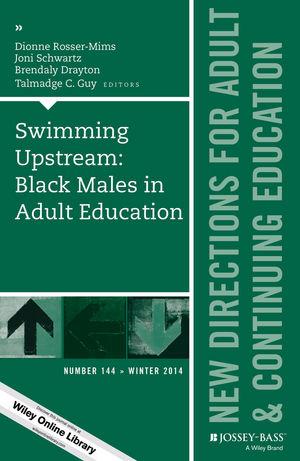
What person of sound mind would make a conscious decision to swim upstream against the current of turbulent waters? The correct answer is “probably no one.” Swimming upstream requires not only excellent navigational skill but perhaps, more importantly, demands that one possess the tenacity and spirit of a survivor. That is precisely why the metaphor “swimming upstream” is so appropriate in describing the plight of scores of African-American men who elect to enter and succeed in higher education (1). Swimming Upstream: Black Males in Adult Education is one volume in the series entitled: New Directions for Adult and Continuing Education. This anthology is intended “to make space for the experience and voices of Black men in the canon of adult education literature, to promote a critical assessment of institutional policies and practices, and to foster awareness and involvement among adult educators” (89). The format of this book is well-suited for academic settings. Each essay is preceded by a short introductory paragraph. At the close of each chapter the authors provide a robust list of reference sources that should prove helpful for students and educators alike. The first chapter discusses the impact of race and racism in the American adult educational system. Chapter two addresses myths and stereotypes employed to depict Black men and their influence on educational attainment. Chapter three explores the reasons for entering adult basic education programs and the role of gender identity. The topic of high school equivalency is discussed in chapter four. Chapter five addresses young Men of Color and engagement in adult learning. Chapter six is concerned with college reentry for African-American males. Chapter seven addresses the sobering topic of Black male college study following a term of incarceration. Chapter eight discusses military veterans and access to the GI Bill to pay educational expenses. The final essay, chapter nine, culminates with a call to action for educational practitioners. Understanding context is critical. In recent years a growing constituency has emerged that believes society has entered a post-racial or “colorblind” era. They advance the proposition that one’s race or ethnicity has no bearing on one's ability to survive and prosper in modern America. I strongly disagree with the post-racial theorists but recognize that it would be helpful for books like Swimming Upstream to squarely confront the legitimate concerns of post-racial proponents. In so doing one hopes that individuals on both sides of the argument will ultimately reach a consensus that the mission of ensuring equal educational opportunities for every individual remains a struggle that must still be waged today. Swimming Upstream moves that discussion forward with compelling statistical and anecdotal evidence. In 1903, the late W.E. B. DuBois prophesied in The Souls of Black Folks that the problem of the twentieth century would be the “color line” – the invisible yet palpable line of demarcation between Caucasians and African-Americans that was often characterized by overt discrimination and bigotry. More than one century later the question of whether “Black lives matter” is, in my view, a logical extension of DuBois’ central thesis. It can be argued that Swimming Upstream may unintentionally serve to remind us that certain remnants of the issues raised by DuBois remain unresolved today. For some readers this will speak to the relevance and timeliness of Swimming Upstream. An average book informs and a good book intrigues the reader. But an excellent book sparks self-reflection and may even compel one to act in new and bold ways. As a college instructor I routinely survey students to ascertain why they decided to embark on a college education. The primary responses from students generally, and African-American males specifically, are: “I want to make my parents proud of me” and “I want to set a positive example for my children/siblings/family.” Those learners confirm what I have long known to be true: that given equality of economic and institutional opportunities, African-American males have no less potential to achieve academic and vocational success than any other segment of the American population. College study may not be right for everyone but it must become accessible for anyone. Arguably that is the controversial and exciting rationale for Swimming Upstream. It is an excellent anthology that serves to affirm our collective belief in the basic humanity and intellectual capacity of every individual.